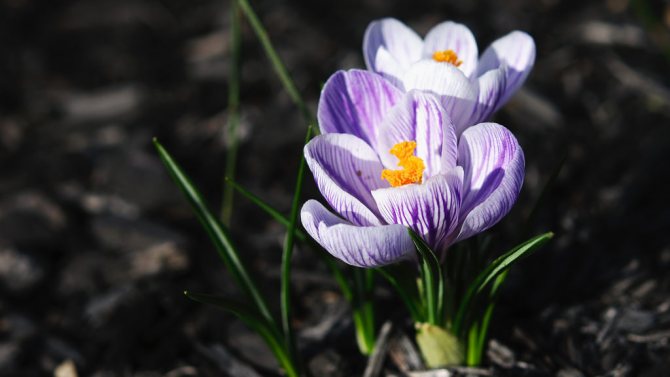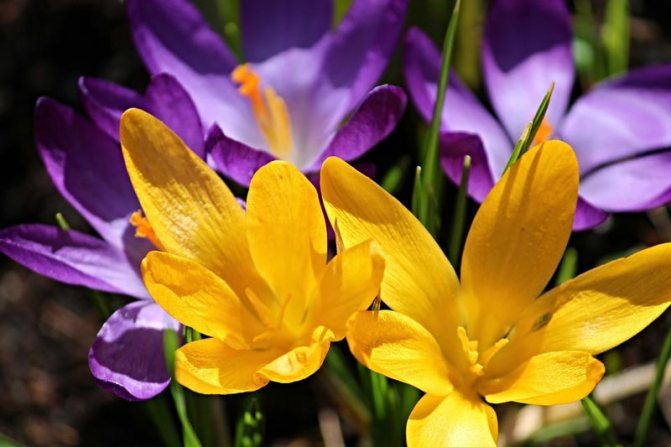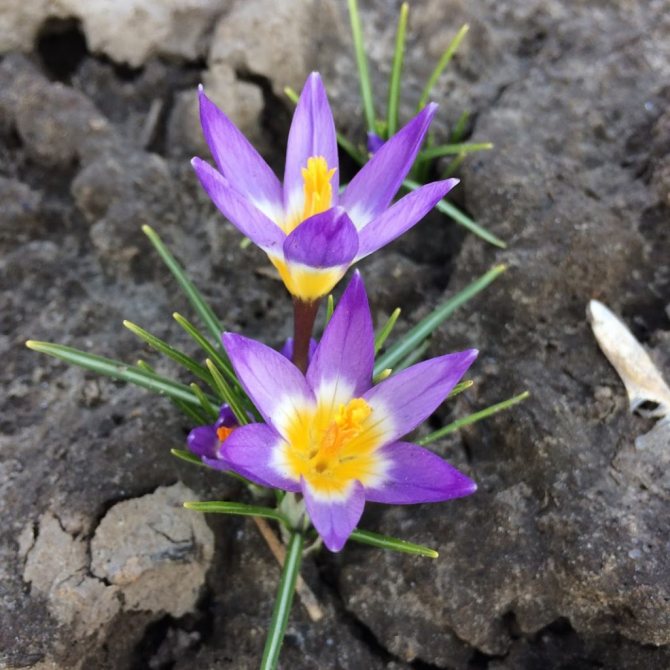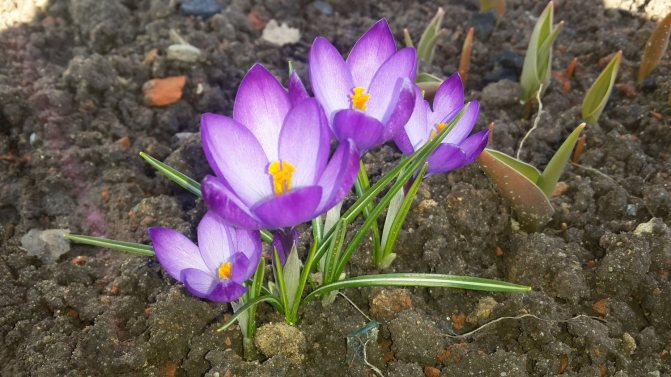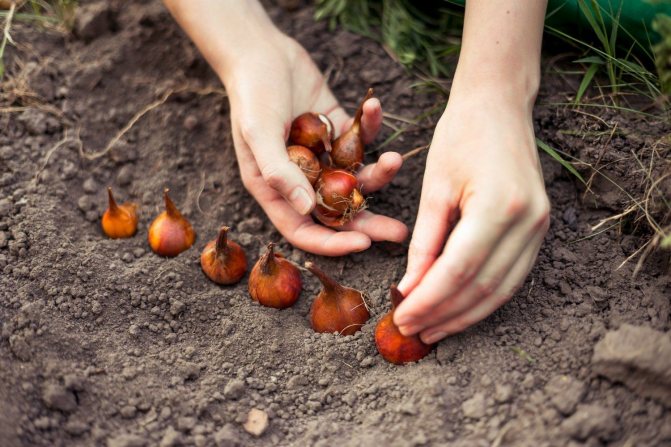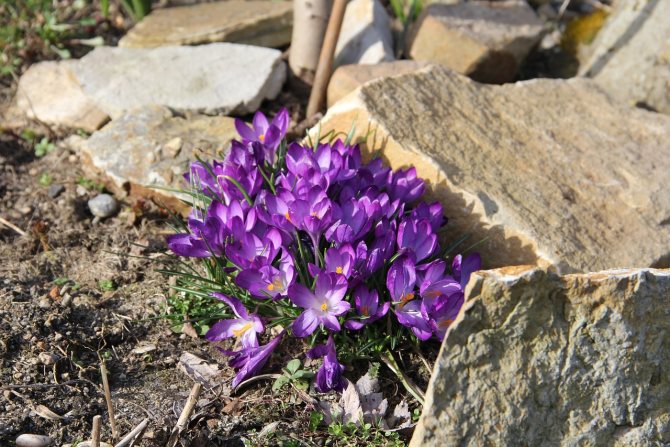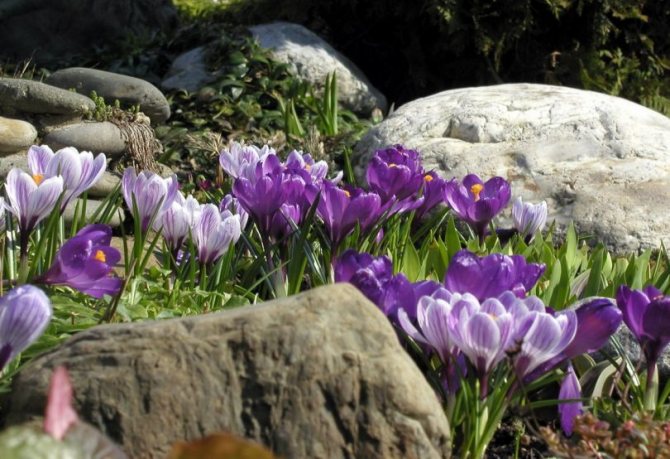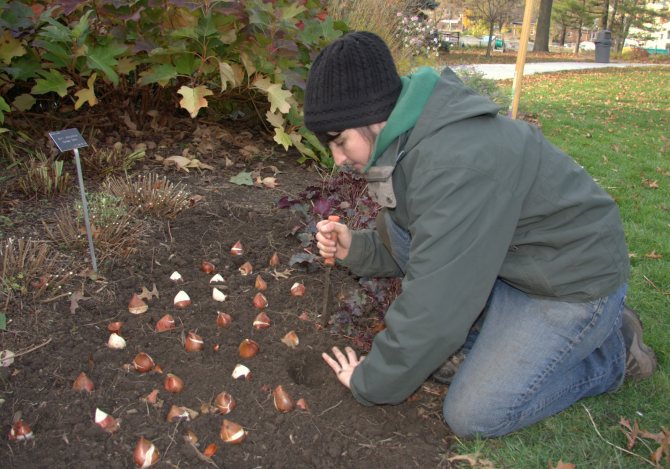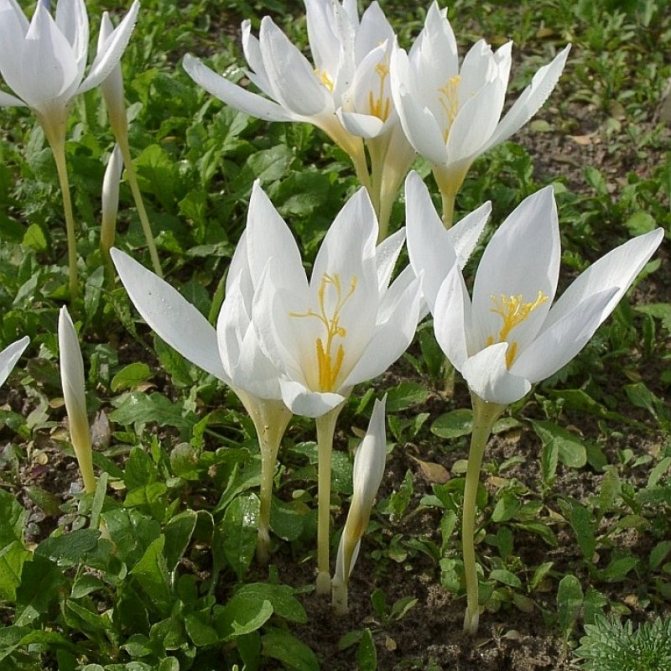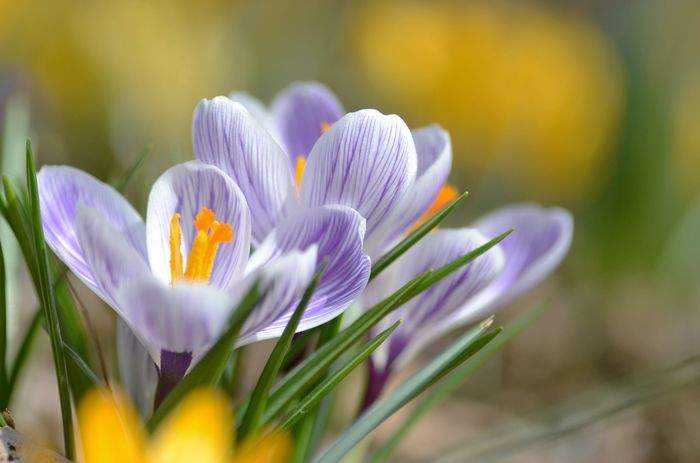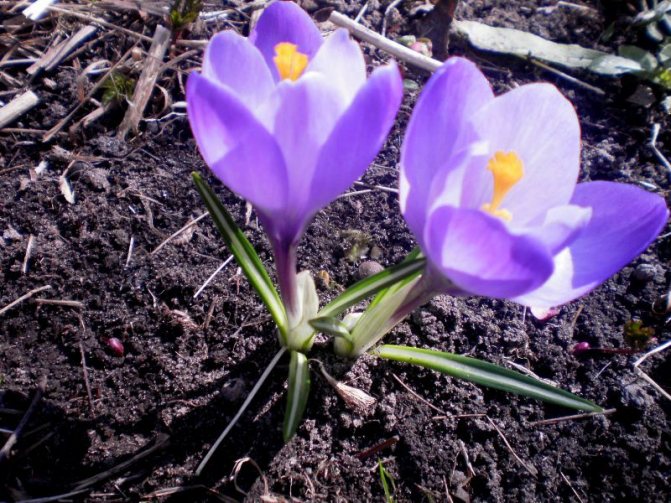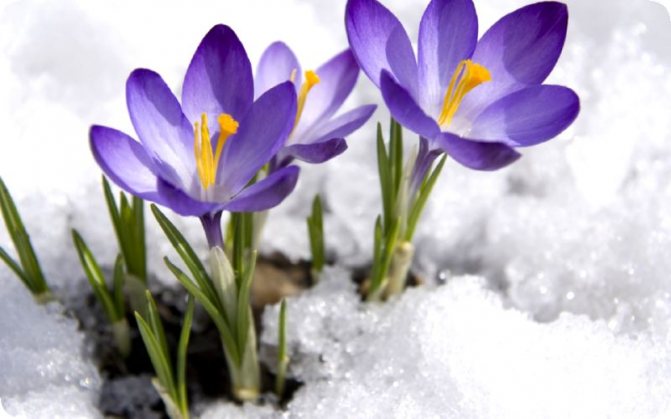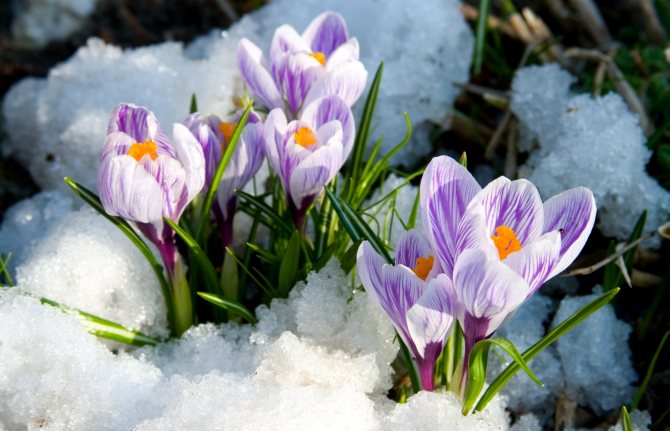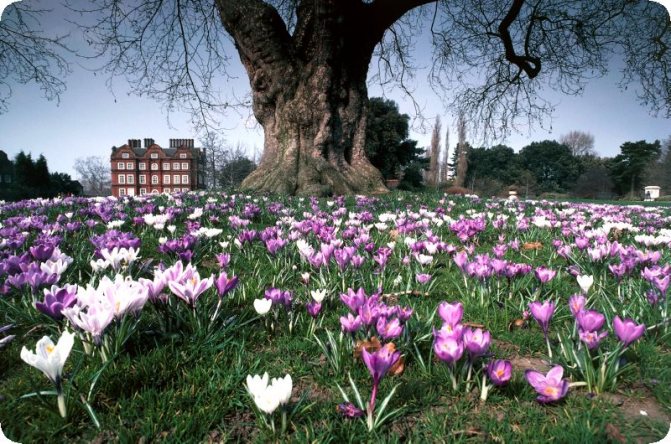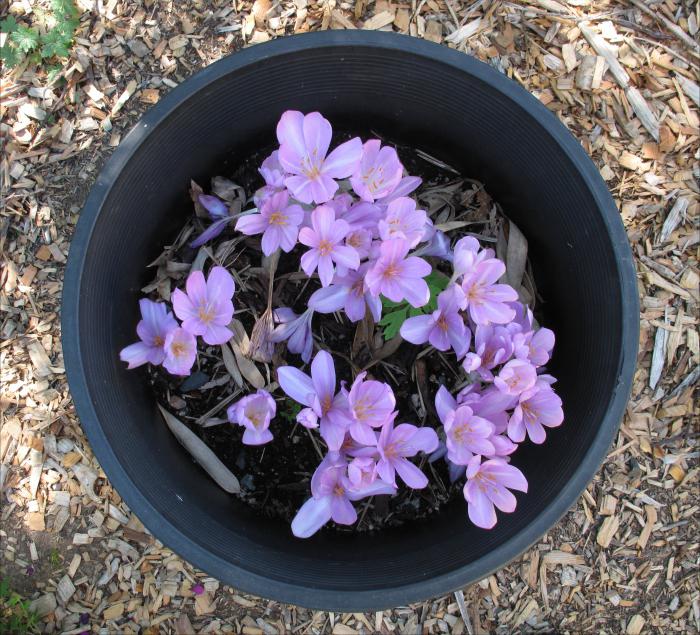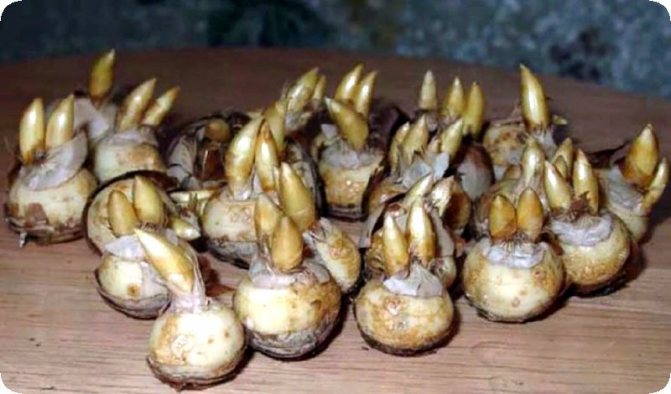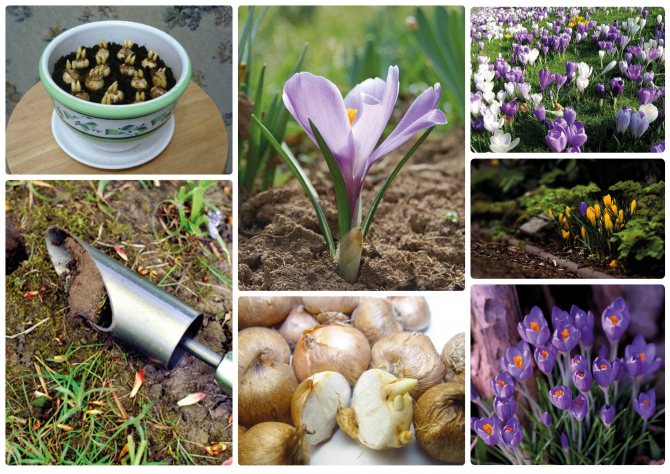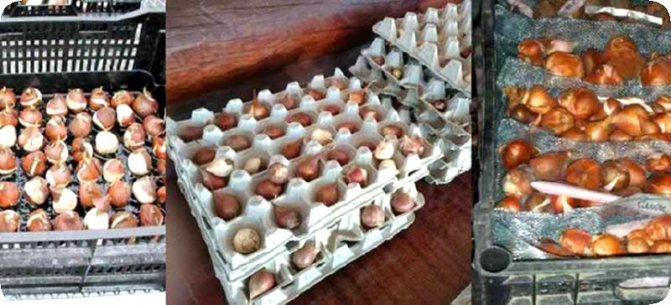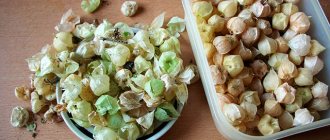Crocus (or saffron) is a welcome inhabitant of the spring garden, a representative of bulbous plants, who is in a hurry to crawl out from under the snow in the gardens. When to plant a crocus in the fall, so that delicate flowers can crawl out of the frozen ground and bloom for a long time until their larger brethren block the sun from them?
This fidget cannot sit underground in any way. Crocus wants to soak up the sun while everything is spacious around and everything is permeated with the sun's rays. You need to have some knowledge so that one of the first spring flowers could proudly raise its head as soon as the sun warms the soil with its rays.
Crocus varieties for planting in autumn
Crocus or saffron is an extensive botanical genus that includes more than ninety types of bulbous plants.
For the autumn planting of crocuses, you must choose varieties that bloom in early spring:
- One of the oldest varieties that has been growing as a decorative flower since the 16th century is spring crocus. It grows up to 17 cm tall, the buds are lilac and white;

- The great variety of two-color crocus surprises with the variety of flowers;
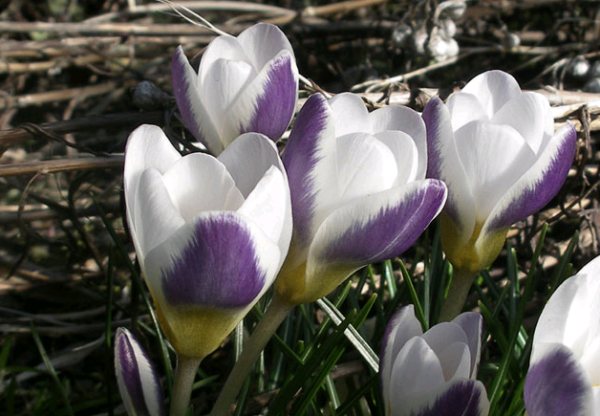

- The golden crocus sparkles in all sorts of shades of yellow petals against the ground. The plant stretches up to 20 cm in height. “Gold heals us from ailments, because the color of saffron is spilled in it,” they say about it in the East.
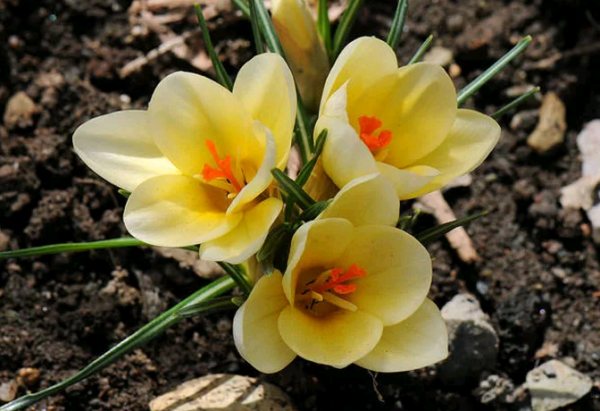

Prevention of diseases and pests
Pests that pose a particular danger to saffron include:
- mice;
- scoops;
- wireworms;
- slugs;
- aphid.
It is not recommended to plant flowers near uncultivated areas. You can protect the flower bed from mice by covering its surface with coarse branches for the winter. From other pests, the main remedy is targeted drugs.
Did you know? Saffron as a spice is an excellent preservative - dishes that are seasoned with it keep well outside the refrigerator.
Diseases that can kill crocus:
- Viral... The flower shrinks or deforms, and the bud does not fully open.
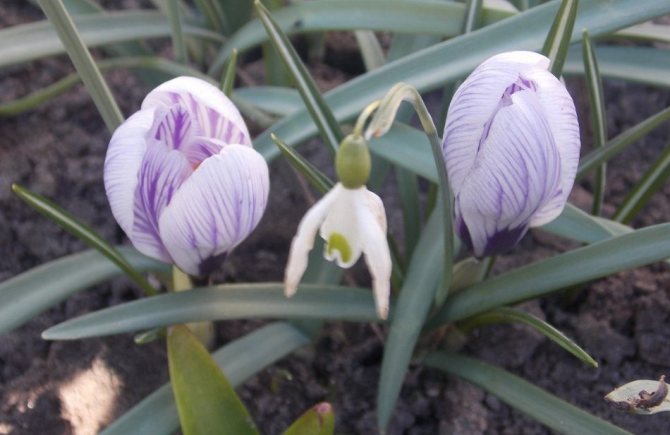

- Fungal... The plant starts to rot.
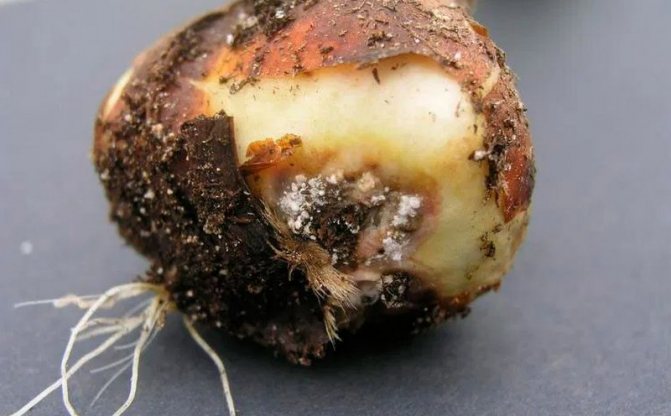

For the prevention of viral diseases, it is necessary to fight against ticks and aphids, which are carriers of ailments. And you can prevent fungal diseases by carefully selecting the bulbs before planting in order to detect the appearance of mold or decay in time. Pretreatment should also not be neglected.
You will be interested to know how and with what to beautifully plant irises.
Diseased flowers must be removed and destroyed so as not to endanger healthy plants. Even gardeners without experience can plant crocuses and create favorable conditions for their growth. Bright spring flowers with delicate elongated petals will decorate your flower bed immediately after the snow cover disappears for more than one year in a row!
Preparing the land for planting crocuses in the fall
A place for planting crocuses should be allocated where there is a lot of sunlight. Crocuses do not grow well in moist soil. Crocuses like the soil to be light and well fertilized. There is nothing to worry about if the soil in the designated crocus planting area does not sufficiently meet these conditions.
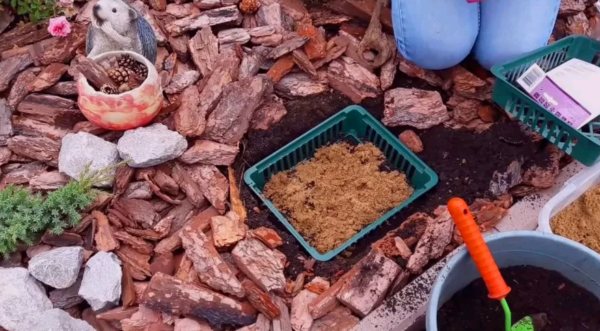

There are 5 simple ways to make your crocuses grow and bloom beautifully:
- Reducing excess moisture can be achieved by drainage;
- Drainage is made from coarse river sand, crushed stone or expanded clay at a depth of more than 20 cm;
- For better air exchange and water permeability, the earth is dug up with humus and river sand to a depth of 20-25 cm a few days before the autumn planting;
- Acidic soil can be neutralized with a mixture of peat and lime;
- Before the autumn planting, it is good to feed the bulbs, but only with granular mineral fertilizers rich in potassium and phosphorus.
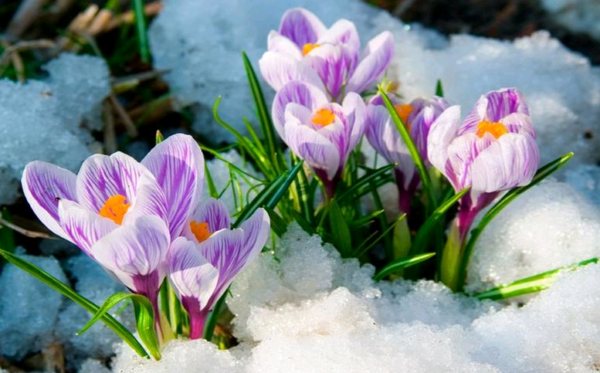

In autumn, the noble saffron lays flower buds and will delight you with a luxurious flower.
Why crocuses don't bloom: reasons
Gardeners often complain that their crocuses do not bloom in any way. There may be several reasons for this:
- Perhaps you planted early spring varieties, so you simply do not have time to see their flowering, because the country bus can start walking quite late, for example, only from April, and they can have time to bloom in March.
- On the contrary, you could plant autumn crocuses, the flowering of which does not begin until September-October, but their leaves also appear in the spring and die off by the end of May-beginning of June.
- Mice often like to feast on flower bulbs. How to deal with rodents on a personal plot is described
- There was an excessive division of the bulbs, which is why they simply could not bloom due to a banal lack of strength after the breeding process.
- The planting was too deep, or the soil is too heavy or clayey, due to which the sprouts cannot make their way to the light.
The decisive steps when planting crocuses in the spring and fall should be choosing the right garden location, choosing the right soil, and how to properly prepare and handle the bulbs before planting. In addition, in the culture of novice flower growers, there should be rational outdoor care and care after flowering. And then the captivating crocuses will only delight you!
An early flower that pleases the eye with the first ray of the spring sun is proudly called crocus. This flower is also widely known as saffron. Crocuses are planted in autumn. The required amount of fertilizer must first be applied to the soil, since this flower prefers loose, fertile soil.
Preparation and storage of tubers before planting in the fall
The work on planting crocus bulbs in the ground in the fall must begin in the middle of summer. The plant is at rest. Now is the time to dig up the crocuses.
You can not cut off the leaves of crocuses before their natural withering away, the plant is stocked up with food after flowering
How to identify a healthy tuber:
- The onion should be heavy and dense;
- Regrown, shaggy roots will not give good shoots in early spring;
- Dark spots on the tubers indicate the beginning of rotting.
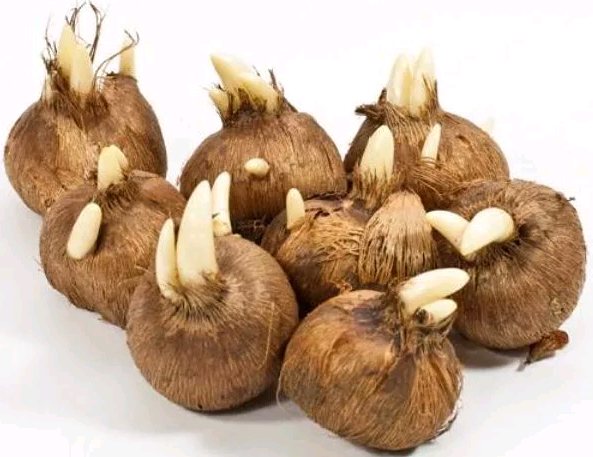

Healthy tubers need to be dried in a shaded place for at least a week, and then separated from small bulbs, divided nests and selected babies that easily leave themselves.
Place the dried material for half an hour in a strong solution of potassium permanganate and dry again. Store in a dry place by placing them in wooden boxes in one layer at room temperature.
When to plant crocuses
The planting procedure for this perennial plant can be carried out not only in spring, but also in autumn. This defines the crocus species. For the "autumn" variety, the "correct" period for planting bulbs is autumn, and then in early spring crocuses will decorate the garden with their gentle flowering for up to 10 days. And if the variety belongs to the "spring" group, then it must be planted exclusively in the spring.
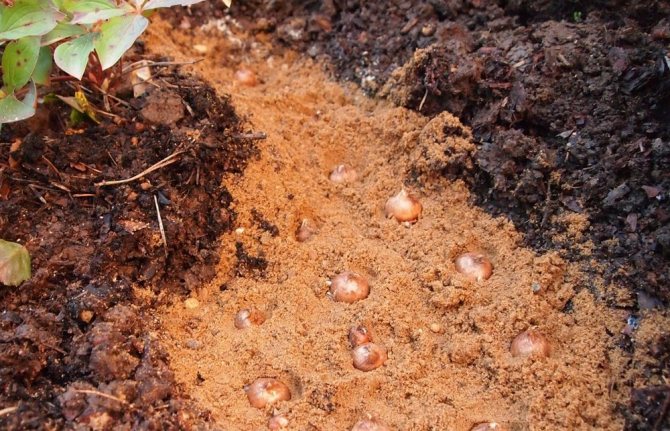

If the variety and planting time do not match, it is difficult for the plant to take root. For the same reason, it may not ascend at all. Increasingly, gardeners are moving flowers grown in flowerpots into the ground. This should be done in the spring, around the beginning of April.
Planting crocuses in the fall in the ground
When to plant crocuses in autumn? It all depends on what the weather will be like.Warm and long autumn, and even Indian summer, will delay crocus planting until the beginning of November. But, if bad weather was charged back in September, and even frost came, then it's time to start planting the bulbs. Crocus tubers begin to awaken when the temperature in the ground drops to 10 ° C.
We dig holes in the prepared ground. Its depth depends on the composition of the soil and the size of the bulb itself. The larger the planting material, the more the hole should be dug. In order for crocus bulbs to multiply, you need to plant them only 5 cm in the ground and you can get up to 10 children.
In order for the crocus to bloom longer, it is necessary to plant the seeds deeper and less often it will be necessary to deal with the division of the overgrown tubers.
The distance between the holes is no more than 10 cm. Crocuses quickly overgrow with children. Lovers of a thick carpet of crocuses can reduce the distance between the planting material to 3-5 cm. Then the transplant will have to be done not in 4-5 years, but after 2 years. Watering crocuses is done after planting only when autumn is dry and the soil requires moisture.
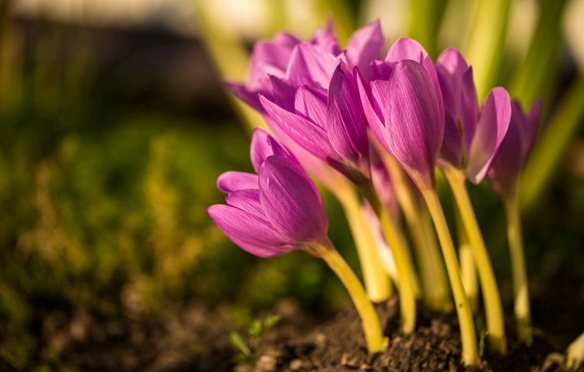

Transplant in the fall
Since saffron hibernates safely in the ground, there is no need to dig it up. If there is no desire to transplant flowers to another place, they can not be disturbed for a maximum of 5 years. Whether a transplant is required or not depends on how much the plants have grown on the site.
Crocuses are easily reproduced by children. If the bulb is old enough, there are already a lot of children on it, and it becomes cramped for them in the planting hole. In this case, plants should be transplanted to avoid flower shrinkage. About a month after flowering, when the foliage turns yellow and begins to dry out, you can dig up the bulbs.
Video: breeding and transplanting crocuses
Crocus care in autumn
Autumn care for planted flowers consists of watering if the fall is dry. You need to loosen the ground after each watering.
Weeds must be removed regularly. In case of endless torrential autumn rains, it is necessary to protect the tubers from excessive moisture by covering them with a film. You should not fertilize crocuses in the fall.
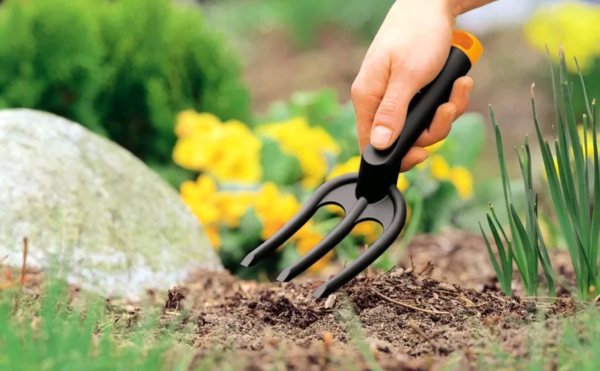

We should not forget about the pests and diseases of these little proud women:
- Mice love tasty crocus bulbs and often drag them into their burrows to feast on in winter. It is enough to cover the planting with branches or use ultrasonic scarers;
- The holes in the bulbs make the caterpillars of the scoop butterfly. They just need to be collected during the autumn planting;
- Slugs in the area where the crocus is planted can be removed by mechanical collection of these pests;
- A wireworm, which is very harmful to crocus bulbs, can be eliminated by making traps from wet grass or hay. Cover them with boards and collect pests after a few days;
- Gray rot appears on small, underdeveloped tubers. Get rid of them when inspecting the tubers, sprinkle the sludge with ash.
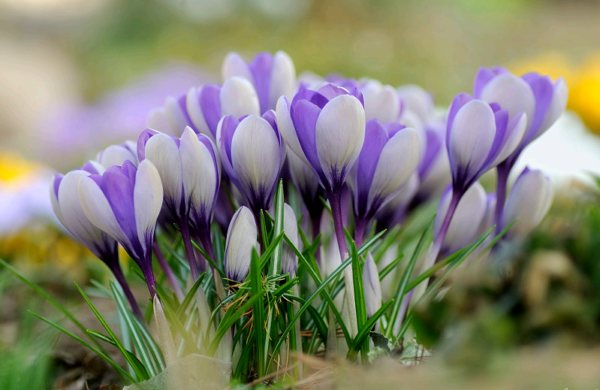

Crocus tubers easily tolerate the winter cold, but after the first cold snaps in the fall, loosen the ground where the crocuses are planted and add mulch here. This can be peat, leaves of trees that have fallen in the fall in the garden, or spruce branches brought from the forest.
A gallant crocus planted in the fall will proudly raise its beautiful head on the spring lawn in gratitude for the care and efforts.
Features of growing autumn crocuses
Crocus plant is short, reaching a height of about 10 cm. Flattened or rounded crocus bulbs reach a diameter of 3 cm, they are dressed in scales and have a bunch of fibrous roots. Crocuses do not develop a stem. Narrow, linear, basal leaves that appear during or after flowering are collected in a bunch and covered with scales.
Single goblet crocus flowers with a diameter of 2 to 5 cm, white, cream, blue, lilac, purple, yellow or orange, blooming on a short leafless peduncle, surrounded by membranous scales.There are varieties of crocuses with a spotted or two-tone color. The mass bloom of crocuses lasts from two to three weeks. Crocus species and varieties are divided into 15 groups.
The gardener must record in a notebook the timing of the arrival of cold weather and thaws in his own region. Having received statistics for several years, it is possible to determine the most favorable terms for planting the material.
In central Russia, in the Moscow region, the Leningrad region and in Ukraine, the bulbs are planted in open ground in early October. If the weather is cool in September. Disembarkation can be made earlier. In southern Russia, crocuses are planted in open ground at the end of October. Early planting can cause premature germination; the culture does not need additional insulation.
In Siberia and the Urals, winters are more severe, and autumn is very short. Therefore, it is better to plant bulbs in open ground in September, without waiting for the first frost. The tuber must be deepened as much as possible and additionally covered with spruce branches or sawdust. If forecasters promise an abnormally cold winter, you should not plant a plant before winter in this region.
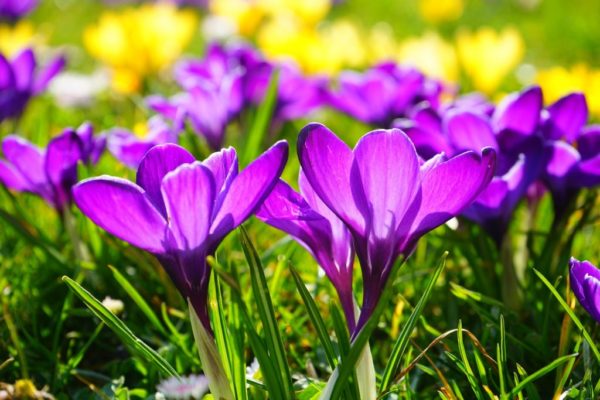

Also pay attention to whether there are drafts on the site. Cold autumn winds can break fragile crocuses. They will not like them in waterlogged areas, where the bulbs can rot. In terms of soil, autumn crocuses grow best on light loams with neutral acidity. There will be no problems with wintering - the bulbs tolerate winter well and do not need shelter.
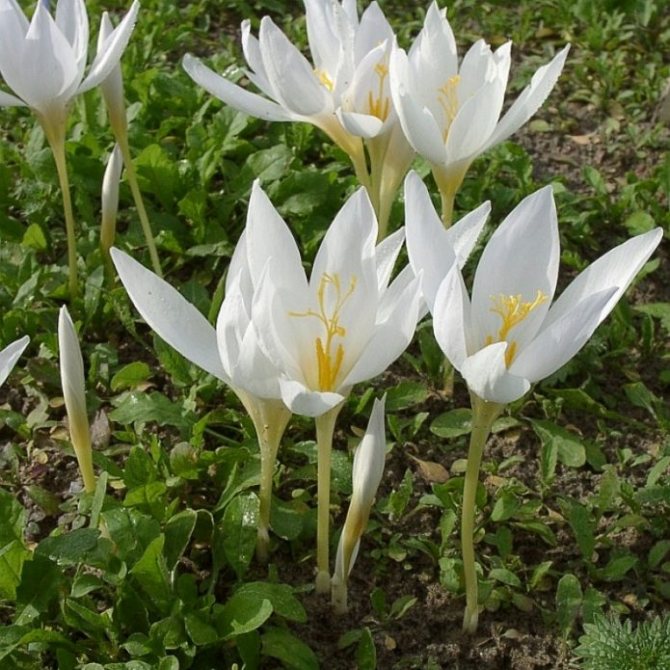

Crocus with delicate flowers of the Albus variety blooms in late September or early October, it is planted in spring
Thus, when buying planting material, you need to find out which variety this variety belongs to. There are much fewer autumn flowering ones, for example, Albus, Valikola, Oksonian. Spring-flowering crocuses are much more common, which is not surprising: after all, it is in spring, when it is still gray and not even greenery around, that the eye wants delicate flowers.
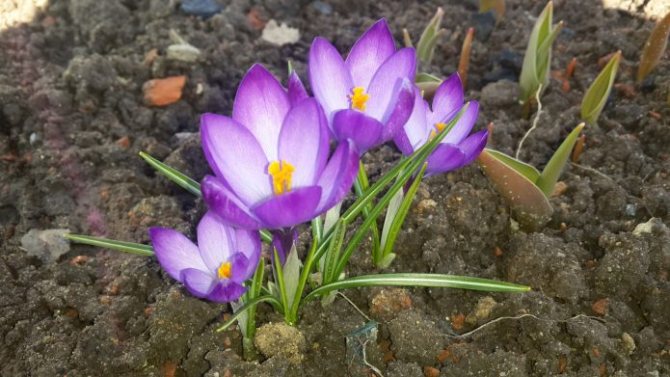

When the ground is still damp after winter, and the grass is just beginning to appear, spring flowers are especially desirable.
It is unrealistic to plant spring-blooming crocuses in spring, they should be planted in the fall, at about the same time as tulips or daffodils, and better - later. Before frost, the bulbs should take root and get stronger.
Selection and preparation of planting material
The health and splendor of the flowering depends on the planted bulbs. If crocuses of poor quality were planted, then you should not expect good results in the spring. Before purchasing, the planting material is carefully examined for damage.
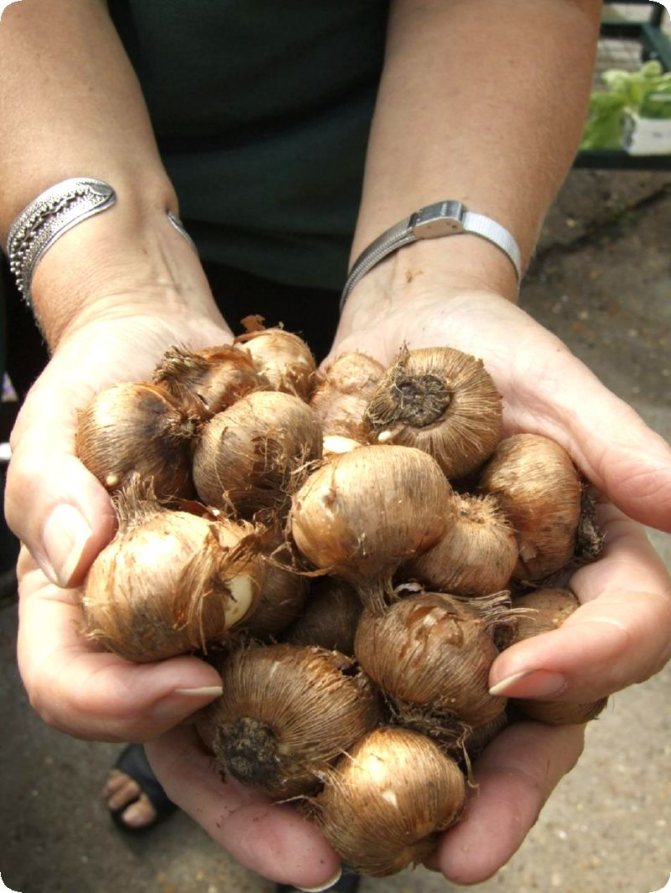

Experienced florists recommend paying attention to the following features:
- Crocus tubers should be dense with dry scales. The presence of moisture indicates damage or violation of storage conditions.
- Free from dents, cuts, stains, signs of disease and pests. Weakened corms will die in winter and will not produce healthy flowers.
- Lack of mold and mildew smell. Fungal spores provoke rotting and death of plants.
- Roots and stems indicate germination. These bulbs are not used for planting in the fall.
Important! For cultivation, large and visually whole tubers are selected. Such specimens will show the best results in the spring.
Crocuses: a short description of the plant
This plant belongs to the Iris family. About 80 of its species and more than 300 varieties are known. Crocuses are divided into two huge groups:
- those that bloom in spring;
- those that bloom in summer.
Their flowering period is very short - no more than 10 days.
The main features of the above flower:
- resistance to unforeseen atmospheric phenomena;
- tendency to reproduce rapidly;
- unpretentious care.
In one place, these flowers can grow for 5 years.
Locations and soil for flowers
This plant needs a well-prepared soil.It is fertilized with compost and manure, in addition, it is well loosened. Excessive moisture and stagnant water are not good for a flower. Therefore, if crocuses are planted in autumn, a little sand should be added to the soil, especially clayey.
The best soil for this plant is, of course, light sandy loam soil. The area should be well-drained, as stagnant water leads to rotting of the plant.
So that the flowers are not small, it is important for them to find a place that is well lit. It is important that the plants do not shade the trees. Although this plant grows well in partial shade.
Soil fertilization also needs to be taken seriously. It is important to remember: nitrogen is a great danger for crocuses. Therefore, the best option for him is fertilizers rich in phosphorus and potassium. After all, the first trace element is necessary for the formation of crocus buds and the extension of the flowering period. The second trace element is important precisely
Crocus propagation by seeds
These plants reproduce by their "children" - these are daughter corms. They are formed from the buds that sit in the sinus of the scales. When the old corm dies off, new babies begin to grow on their own, forming a kind of "nest". It turns out a group of related bulbs. The above method is the most effective method for propagating plants such as crocus flowers. Planting and care in this case are done very carefully so as not to damage the bulbous material.
The corm grows every year and becomes larger. As a result of this, many so-called babies are formed. When it becomes cramped for them, and they are already beginning to interfere with each other, they must be seated.
If conditions permit, it is important to plant children of one bulb of a particular species in groups. This flower will bloom approximately 4 years after planting.
The second method of reproduction of crocuses is by seeds. But this method is only suitable for spring flowering plants. Crocuses, which bloom in the fall, bear irregularly because early severe frosts prevent them from setting seeds.
Sow this planting material in small pots or boxes. This will allow small shoots not to get lost among the large ones, and they will also be better protected from weeds. The pot must be covered with black foil and made sure that they do not dry out. If the leaves of the seedlings die off completely, they can be slightly sprayed with Roundup. But care is important here so as not to make the soil too wet, as this can provoke rotting of the seedlings. Seedlings bloom for about 5 years.


